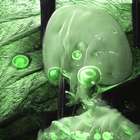The identity of trees: workshop and walk
Posted May 2, 2013 by An MertensWe explored the forest and the city over two days, looking deeper into the ‘arboreal identity’ of the trees we encountered in both places. This time we wanted to answer some very practical questions about the trees we met. What is your name? How old are you? Where are you from? Who is taking care of you? Are you registered somewhere? Do you have a partner, family, friends? Asking these questions led to some remarkable stories about the unique trees we encountered, and sharing these stories meant liberating some trees from anonymity.
On Saturday morning we looked at the juridical context of some remarkable trees in the forest, near the Verdronken Kinderen nature reserve. Since 1983 this reserve has been in included in the Brussels Capital Region, as is 38% of the forest overall. It is owned and managed by the BIM/IBGE (Brussels Institute for Environmental Management). Six percent of the forest is owned by Wallonia and 56% is owned by the Flanders Region; only recently the three Regions collaborated to set out a common 'structural plan' for the forest. From 2003 the Forest de Soignes was recognised as a habitat in the framework of the EU Natura 2000 plan.
The Natura 2000 network is a response to the alarming news that 50% of all European mammals and 30% of fish, birds and reptiles are endangered due to human activities. Natura 2000 sets out the legal frameworks, evaluation criteria, directives and concrete plans for environmental protection through which the EU hopes to preserve biodiversity in different member states. The idea is not to exclude human activities in these zones, but to prevent those that would harm the preservation of the forest and species living there that are of communal importance. In 2007 these plans were consolidated in Brussels law with the decision to turn the richest biotopes of the forest into 'special protection zones'. They can be nature reserves (Verdronken Kinderen), focused forest reserves, integral forest reserves (no human intervention at all), or archeological reserves.
For visitors this means concretely that you cannot leave the paths in these zones, and that you have to keep your dog on a leash. For the trees, it means that they are taken care of by BIM/IBGE, and -- in the case of the trees we encountered -- by the forest guard Mr Vandevelde and his team. They decide when a tree has to be cut down, what zones to plant new trees in, and which of the grown-ups can stay and which have to go. The 'beech cathedral', as we know it, will not be able to survive the coming climate changes. Beeches cannot stand heat. Part of the forest will be kept as a 'protected landscape', but in general the intention is to reestablish the diversity of the early forests (oaks, birches, sycamore, etc.).
On Sunday we looked at the status of some trees in the Brussels city centre (who lived within the postal code area of 1000). Why so specific? Ownership and management of the trees in urban public spaces depends on the ownership of the street they are found in. This can be one of the nineteen Communes, or the Region (and in some cases the Royal Foundation). If it is the Region that owns the tree, it will have been allocated a number and will be part part of a three-year survey and maintenance schedule carried out by the BIM/IBGE, which works with aerial photography and geography company, Eurosense Belfotop. If it is owned by the Commune, the management is done by the Commune’s department for green spaces (if it exists). In the Brussels 1000 postal code area, this means that particular trees were probably anonymous before the completion of the inventory system that started in 2011. Newly planted trees will have been registered since 2008.
There is only one protected tree in the Brussels Region (a Lebanon cedar in the Palmerstonlaan). This is the only tree that cannot be cut without public permission and has to be replaced when it dies. Another type of protection is to register the tree on the 'conservation list'. Anyone can do this. It means the tree is maintained and cannot be cut without public permission.
It is no coincidence that the trees in the city are very different species to the ones we met in the forest. There are only a few types of trees that can survive in the city. This depends on several factors: their resistance to salt (in winter), vandalism, pollution, pressure on their root systems, and also the conditions of various pipelines under the roads (gas, water, electricity, metro…).
We had a look at different trees; a remarkable fig tree at La Bourse that no one had noticed before. Afterwards we explored the city forest of Laken, where it is difficult to tell the difference between human and animal traces (of nutshells, green leaves, bones…)
Emerging from this workshop, we designed identity cards for trees, assigning arboreal identity to the category of non-human legal persona (like corporations). The walks ended with inauguration rituals in which the selected trees were decorated with their freshly conceived ID card.
To be continued with some concrete portraits of trees.
See also:
Created: 15 Jul 2021 / Updated: 15 Jul 2021

